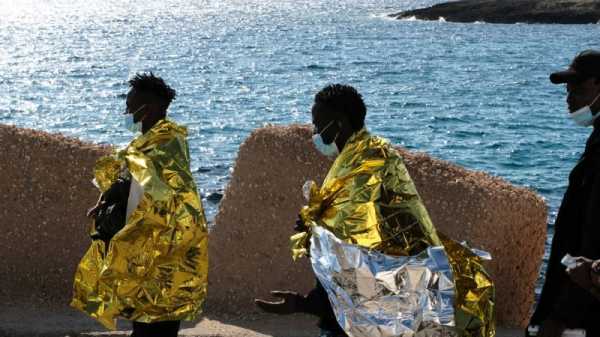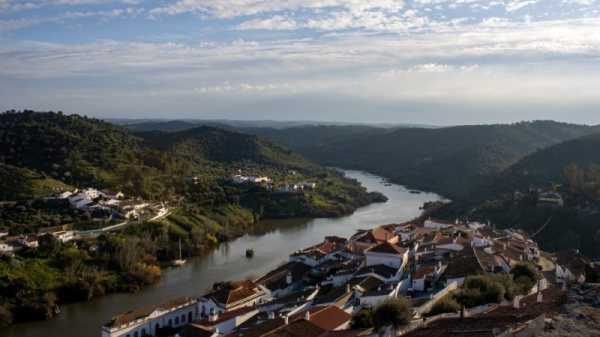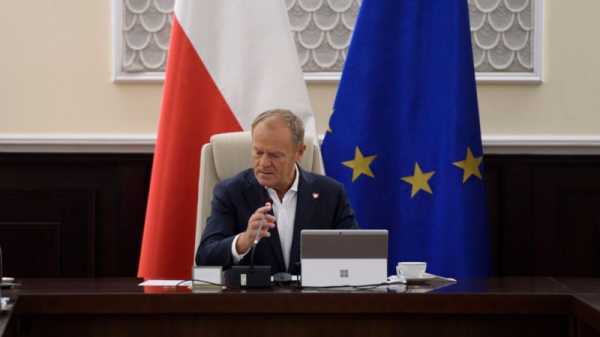
A vessel belonging to the militia of Libyan warlord Khalifa Haftar illegally returned about 250 migrants onboard a fishing boat in distress in international waters near Malta to Benghazi, in an operation at the weekend.
The operations were monitored by EURACTIV from the Ocean Viking in the Mediterranean Sea.
On the morning of Friday (7 July), the Ocean Viking, a boat belonging to NGO SOS Mediterranee, received a distress call about a fishing vessel adrift and due to run out of fuel, with about 250 people onboard, 140 nautical miles from Malta (259.28 km).
The boat was also spotted by the plane ‘Seabird’ from the NGO Sea Watch and a drone piloted by Frontex, the EU border agency.
The case was given first to the Ocean Viking by Italian authorities, but the Maltese authorities took over the coordination since the boat was in its search and rescue area.
However, the boat was returned to Benghazi, officially without Malta’s authorisation, by a Libyan’s Vessel on the night between Friday and Saturday (7-8 July), according to radio communication of the emergency channel 16 heard by EURACTIV.
SAR zones are international waters divided among the countries bordering the shores of the Mediterranean to better coordinate SAR operations. Usually, when a distress case is in a specific area, such as Malta, the local authorities should coordinate the search and rescue.
However, it can happen that another country, such as Italy, coordinates an operation in a SAR zone of Malta or Libya – a scenario that has played out multiple times.
The operation
The Ocean Viking received the alert when it was in the process of rescuing two other vessels in international waters overlooking the coast of Libya, containing 57 people – more than ten hours of navigation away from the 250 in distress.
When the 57 survivors were brought onboard the Ocean Viking, slightly before 2 PM CEST, the NGO boat started to navigate towards the fishing boat in distress.
Initially, the Maltese authorities gave the fishing vessel the satellite number of the Ocean Viking, an unusual practice in SAR coordination.
Subsequently, the Italian authorities gave the Ocean Viking the green light to proceed on the case, and then to go to the assigned port of Civitavecchia, near Rome, roughly four days of navigation from the distress case.
However, later in the day, the Italy told the Ocean Viking to change course because Malta wanted to assume coordination of the rescue.
Different merchant vessels were on the spot monitoring the situation during that day, however, due to the shape of their ships, they cannot perform a rescue.
In the evening, a Libyan vessel owned by warlord Khalifa Haftar arrived on the scene. The vessel ignored repeated instructions from the Maltese military planes not to proceed with the interception via the emergency radio channel 16.
Benghazi is more than 360 nautical miles from Malta (more than 670 km).
The boat responsible for the return was identified by the NGO Sea Watch as being part of the Tariq Ben Zayed, a vessel belonging to Haftar’s forces. The identification was made via a video taken by the Sea Watch plane ‘Seabird’ that observed the return.
According to international law, rescues are concluded when survivors are disembarked in a place of safety. Since Libya has been classified unsafe place by the United Nations and the EU’s Home Affairs Commissioner Ylva Johansson, the Libyans’ interception is an illegal return.
Returns to Libya violate the principle of non-refoulment which states that “no one should be returned to a country where they would face torture, cruel, inhuman or degrading treatment or punishment and other irreparable harm”.
Migrants in Libya face documented abuses in a well-established network of human trafficking that the UN condemned after publishing in March 2023 the results of a fact-finding mission.
The 250 migrants were eventually disembarked in Benghazi, in the Cyrenaic region.
The other side of Libya
General Khalifa Haftar is one of the most influential militia leaders in Libya, controlling the East of the country, the so-called Cyrenaica. Haftar’s regime is not recognised by the EU or the wider international community, which holds its only official dialogue with the Tripoli-based administration in the west of Libya.
EURACTIV asked the European Commission whether it plans to open dialogue with militia or other political factions in Libya. EU foreign affairs spokesperson Peter Stano replied that the “main interlocutor” is in Tripoli.
The “EU is engaged and supports all the Libyan led and international efforts to find the solution between the individual actors in Libya, because this is the first precondition so the political solution can be found to end the decade-old conflict in the country,” Stano said, referring to the civil war in the North African country since 2011.
Italy is now in dialogue with Haftar, as the number of migrants leaving from Cyrenaica has increased since the start of the year. The warlord met the Italian Prime Minister Giorgia Meloni in May, where migration was the main topic on the agenda.
[Edited by Benjamin Fox/Nathalie Weatherald]
Read more with EURACTIV

Romania horrified by inhumane abuse in care centres for disabledIn today’s edition of the Capitals, find out more about the Slovenian government being forced to withdraw a major health reform bill, the Dutch’s plan to boost the military capacities of their Eastern European partners, and so much more.
Source: euractiv.com



